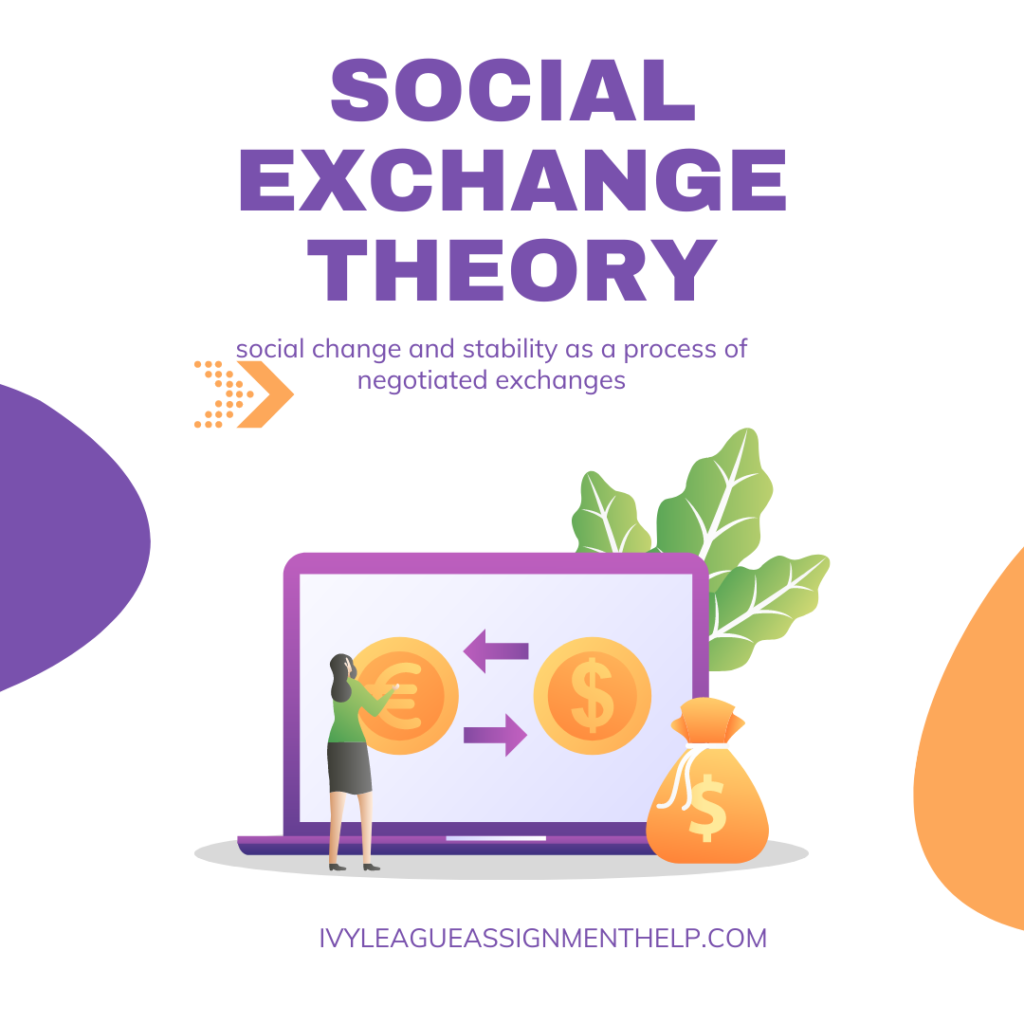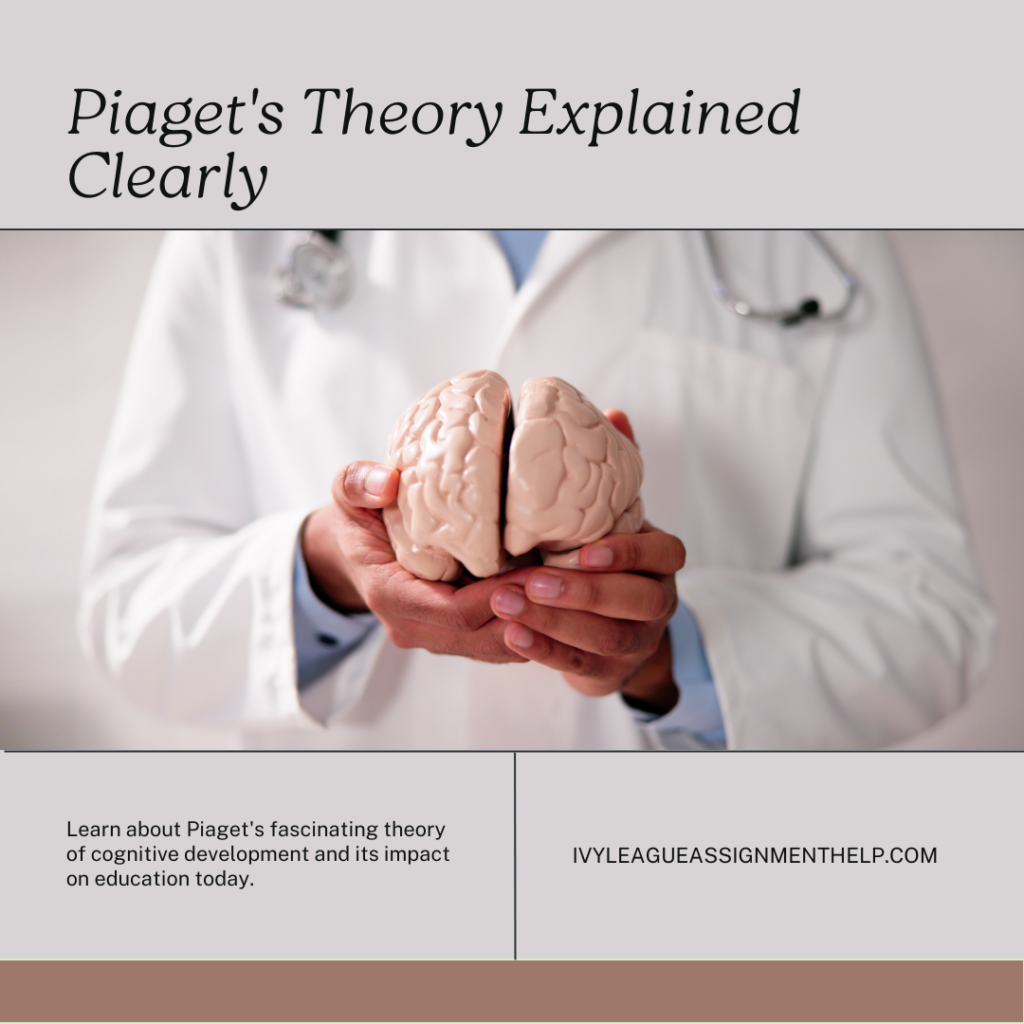Social Exchange Theory
Introduction to Social Exchange Theory
Social Exchange Theory (SET) is a sociological and psychological perspective that explains social change and stability as a process of negotiated exchanges between parties. At ivyleagueassignmenthelp.com we help and guide students to understand that human relationships are formed by the use of a subjective cost-benefit analysis and the comparison of alternatives.
Historical Background of Social Exchange Theory
Origins and Key Figures
Social Exchange Theory emerged in the mid-20th century, with key contributions from sociologists such as George Homans, Peter Blau, and Richard Emerson. These pioneers drew on principles from economics and behavioral psychology to explain social interactions.

Core Principles of Social Exchange Theory
Rewards
Rewards are the positive outcomes or benefits that individuals receive from a relationship. Examples include love, approval, financial support, and social status.
Costs
Costs are the negative outcomes or sacrifices that individuals incur in a relationship. Examples include time, effort, stress, and emotional pain.
Reciprocity
Reciprocity refers to the mutual exchange of benefits and favors in relationships. It is a fundamental principle that maintains the balance and stability of social exchanges.
Comparison Levels
Comparison levels are the standards by which individuals evaluate the desirability of a relationship, based on past experiences and societal norms. They influence satisfaction and decision-making in relationships.
The Role of Rewards and Costs
Definition
Rewards and costs are central to Social Exchange Theory. Rewards are benefits received from a relationship, while costs are the negatives or sacrifices incurred.
Examples
Examples of rewards include affection, support, and companionship. Examples of costs include time investment, stress, and financial expense.
Impact on Relationships
The balance of rewards and costs affects the satisfaction and stability of relationships. Relationships are more likely to be maintained when rewards outweigh costs.
Reciprocity in Social Exchange
Definition
Reciprocity is the exchange of resources, services, and favors among individuals. It ensures that the benefits and obligations in a relationship are balanced over time.
Types
There are two types of reciprocity:
- Generalized Reciprocity: Indirect exchange where the benefit given is not directly reciprocated but is expected to be returned in the future.
- Balanced Reciprocity: Direct exchange of equal value.
Importance
Reciprocity fosters trust, cooperation, and mutual support in relationships. It strengthens social bonds and promotes long-term interactions.
Comparison Levels and Alternatives
Definition
Comparison levels are the benchmarks individuals use to evaluate the quality of their relationships. Comparison level for alternatives involves evaluating whether alternative relationships or situations would be more rewarding.
Influence on Decision-Making
These comparison levels influence decisions to stay in or leave relationships. High satisfaction and low alternatives often lead to relationship stability.
Equity and Fairness in Relationships
Definition
Equity in relationships refers to the balance of contributions and benefits between partners. It is closely related to fairness and justice in social exchanges.
Equity Theory
Equity Theory posits that individuals feel satisfied in relationships when their perceived inputs and outcomes are balanced with those of their partners.
Impact on Satisfaction
Perceived inequity can lead to dissatisfaction and distress in relationships, motivating individuals to restore balance by adjusting their contributions or benefits.
Applications of Social Exchange Theory
Relationships
In relationships, SET helps explain dynamics in romantic partnerships, friendships, and family interactions. It provides insights into commitment, satisfaction, and conflict resolution.
Workplace
In the workplace, SET is used to understand employee motivation, leadership dynamics, and organizational behavior. It highlights the importance of rewards, recognition, and reciprocal relationships in employee engagement.
Education
In education, SET informs teacher-student interactions, classroom management, and the development of positive learning environments. It emphasizes the role of mutual respect and support in educational success.
Healthcare
In healthcare, SET examines patient-provider interactions, health behaviors, and treatment adherence. It highlights the importance of trust, communication, and reciprocity in effective healthcare delivery.
Social Exchange Theory in Relationships
Romantic Relationships
SET explains how individuals evaluate and maintain romantic relationships based on the perceived balance of rewards and costs. It helps understand commitment, satisfaction, and the decision to stay or leave a relationship.
Friendships
In friendships, SET explores how reciprocity, trust, and mutual support contribute to the formation and maintenance of social bonds. It also examines the impact of perceived inequity on friendship dynamics.
Family Dynamics
SET is used to analyze family relationships, including parent-child interactions and sibling relationships. It emphasizes the role of reciprocal exchanges in fostering family cohesion and support.
Social Exchange Theory in the Workplace
Employee Motivation
SET highlights how rewards, recognition, and reciprocal relationships influence employee motivation and job satisfaction. It provides insights into strategies for enhancing employee engagement and retention.
Leadership
In leadership, SET examines how leaders and followers exchange resources and support. Effective leadership is characterized by fair and reciprocal exchanges that promote trust and cooperation.
Organizational Behavior
SET informs organizational behavior by analyzing how social exchanges shape workplace dynamics, including teamwork, collaboration, and conflict resolution.
Social Exchange Theory in Education
Teacher-Student Interaction
SET explains how positive teacher-student interactions are based on mutual respect, support, and reciprocal exchanges. It highlights the importance of recognizing student contributions and providing constructive feedback.
Classroom Management
SET provides strategies for effective classroom management by emphasizing the role of rewards, fairness, and reciprocal relationships in fostering a positive learning environment.
Case Studies
Case studies demonstrate the application of SET in education, such as programs that promote positive teacher-student relationships and improve student engagement and achievement.
Social Exchange Theory in Healthcare
Patient-Provider Interaction
SET examines how trust, communication, and reciprocal exchanges between patients and healthcare providers influence treatment adherence and health outcomes.
Health Behaviors
SET explores how social exchanges and support networks impact health behaviors, such as adherence to medication, lifestyle changes, and participation in preventive care.
Case Studies
Case studies illustrate how SET can improve patient-provider relationships and enhance the effectiveness of healthcare interventions.
Criticisms and Limitations of Social Exchange Theory
Challenges and Counterarguments
While SET has been influential, it faces criticisms such as:
- Overemphasis on Rationality: Critics argue that SET assumes individuals always act rationally, overlooking emotional and irrational aspects of behavior.
- Reductionism: Some suggest that SET simplifies complex social interactions by reducing them to mere exchanges of rewards and costs.
- Cultural Bias: SET may not fully account for cultural differences in social exchange norms and practices.
Social Exchange Theory in Modern Sociology
Research Advances
Modern research continues to explore and validate SET, using advanced methodologies to study social exchanges in diverse contexts. This research enhances our understanding of the complexities of human relationships.
Integration with Other Theories
SET is integrated with other sociological theories, such as symbolic interactionism and social network theory, to provide a more comprehensive understanding of social behavior and interactions.
Social Exchange Theory vs. Other Sociological Theories
Comparison with Symbolic Interactionism
While Symbolic Interactionism focuses on the subjective meanings and symbols in social interactions, SET emphasizes the rational calculation of rewards and costs in relationships.
Comparison with Conflict Theory
Conflict Theory examines power dynamics and inequalities in society, whereas SET focuses on the balance of exchanges and reciprocity in social relationships.
Influential Figures in Social Exchange Theory
| Sociologist | Contribution |
|---|---|
| George Homans | Developed foundational concepts of SET, emphasizing the importance of rewards, costs, and reciprocity in social interactions. |
| Peter Blau | Expanded on Homans’ work, integrating macro-level social structures and institutions into SET. |
| Richard Emerson | Contributed to the understanding of power dynamics and dependence in social exchanges. |
Prominent Books and Resources on Social Exchange Theory
| Book/Resource | Author |
|---|---|
| Social Behavior as Exchange | George Homans |
| Exchange and Power in Social Life | Peter Blau |
| The Social Construction of Reality | Peter L. Berger and Thomas Luckmann |
| The Structure of Social Exchange | Richard Emerson |
| Equity Theory: Psychological and Sociological Perspectives | David Messick and Karen Cook |
Case Studies in Social Exchange Theory
Famous Cases
Famous case studies in SET include research on workplace dynamics, romantic relationships, and social networks. These studies highlight the importance of reciprocal exchanges and equity in maintaining relationships.
Contemporary Examples
Contemporary case studies explore the application of SET in digital interactions, healthcare, and community programs, demonstrating its broad relevance and impact.
Future Directions in Social Exchange Theory Research
Emerging Trends
Emerging trends in SET research include the study of digital and virtual exchanges, the impact of social media on relationships, and the integration of behavioral economics with social exchange principles.
New Research Areas
New research areas focus on understanding the role of social exchanges in global networks, exploring the intersection of culture and exchange norms, and applying SET to address social issues such as inequality and resource distribution.
FAQs
What is Social Exchange Theory?
Social Exchange Theory (SET) is a sociological and psychological perspective that explains social change and stability as a process of negotiated exchanges between parties, based on a cost-benefit analysis.
Who developed Social Exchange Theory?
Key figures in the development of SET include George Homans, Peter Blau, and Richard Emerson, who contributed foundational concepts and expanded the theory to include macro-level social structures.
What are the main principles of Social Exchange Theory?
The main principles include rewards (positive outcomes from relationships), costs (negative outcomes or sacrifices), reciprocity (mutual exchange of benefits), and comparison levels (standards for evaluating relationships).
How is Social Exchange Theory applied in relationships?
In relationships, SET helps explain dynamics such as commitment, satisfaction, and conflict resolution by analyzing the balance of rewards and costs and the role of reciprocal exchanges.
What are some criticisms of Social Exchange Theory?
Criticisms include its overemphasis on rationality, reductionist approach to complex social interactions, and potential cultural bias in understanding exchange norms.
How does Social Exchange Theory compare with other sociological theories?
SET differs from Symbolic Interactionism, which focuses on subjective meanings and symbols, and Conflict Theory, which examines power dynamics and inequalities. SET emphasizes rational calculation and reciprocity in social exchanges.
Conclusion
Social Exchange Theory has significantly impacted sociology by providing a comprehensive framework for understanding social interactions and relationships. Its principles offer valuable insights into the dynamics of rewards, costs, and reciprocity, influencing various fields such as relationships, workplace behavior, education, and healthcare. Despite criticisms, SET remains a foundational theory in modern sociology, with ongoing research and applications expanding its relevance. As new social contexts and technologies emerge, the theory will continue to evolve, providing deeper insights into the complexities of human relationships and social exchanges.

